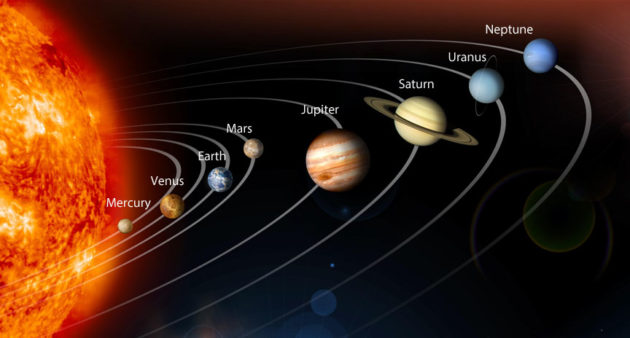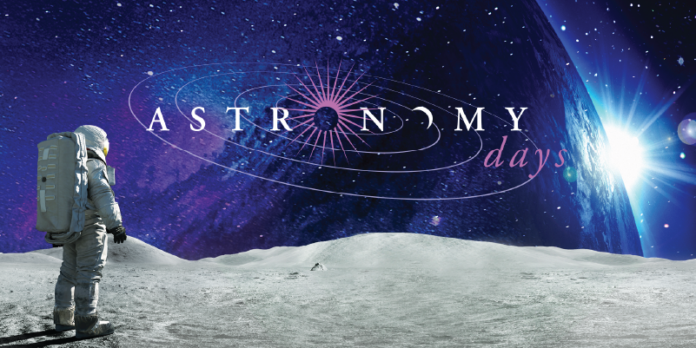Introduction
Welcome to the fascinating world of astronomy! In this article, we will embark on a journey through the vast expanse of the universe, exploring celestial bodies, cosmic phenomena, and our place within it all. Astronomy, the study of celestial objects and the phenomena that occur beyond Earth’s atmosphere, has captivated humans for centuries. From the ancient civilizations that looked up at the night sky in wonder to the modern-day astronomers equipped with advanced telescopes and space probes, our quest to understand the mysteries of the cosmos has led to remarkable discoveries and insights.
What is Astronomy?
Astronomy is a scientific discipline that focuses on the observation, study, and interpretation of celestial objects such as stars, planets, galaxies, and other astronomical phenomena. It encompasses various branches, including observational astronomy, theoretical astronomy, and astrophysics. By observing and analyzing the movements, composition, and behavior of celestial objects, astronomers gain valuable insights into the nature of the universe and its evolution.

The History of Astronomy
Ancient Astronomical Observations
Throughout history, civilizations have observed the night sky with awe and curiosity. Ancient cultures, such as the Egyptians, Babylonians, and Mayans, developed intricate systems to track celestial events and create calendars. These early astronomers made significant contributions to our understanding of astronomy, laying the foundation for future discoveries.
The Copernican Revolution
One of the pivotal moments in the history of astronomy was the Copernican Revolution. In the 16th century, Nicolaus Copernicus proposed a heliocentric model of the solar system, suggesting that the Earth and other planets revolve around the Sun. This revolutionary idea challenged the prevailing geocentric model and paved the way for a new era of scientific thinking.
Galileo and the Telescope
In the 17th century, Galileo Galilei made groundbreaking observations using a telescope, which he developed himself. He discovered the four largest moons of Jupiter, observed the phases of Venus, and documented sunspots on the surface of the Sun. Galileo’s discoveries provided compelling evidence in support of the heliocentric model and further propelled the field of astronomy.
Modern Advances in Astronomy
Fast forward to the present day, and we find ourselves equipped with powerful telescopes, space probes, and cutting-edge technology. The Hubble Space Telescope, launched in 1990, has provided us with breathtaking images of distant galaxies, nebulae, and other celestial objects. Additionally, space missions like Voyager, Cassini, and New Horizons have revealed the wonders of our solar system, including the intricate rings of Saturn, the geysers on Enceladus, and the heart-shaped plains on Pluto.
The Branches of Astronomy
Astronomy encompasses a wide range of specialized fields that focus on different aspects of the universe. Let’s explore some of the prominent branches of astronomy:
1. Observational Astronomy
Observational astronomy involves the direct observation and recording of celestial objects using various instruments, including telescopes and detectors. Astronomers use different wavelengths of light, such as visible, infrared, and radio, to gather data and study objects across the electromagnetic spectrum.
2. Astrophysics
Astrophysics combines the principles of physics and astronomy to study the physical properties, behavior, and interactions of celestial objects. It involves the application of physics to understand phenomena like stellar evolution, black holes, and the origin of the universe.
3. Planetary Science
Planetary science focuses on the study of planets, moons, asteroids, and comets within our solar system. By analyzing their composition, geology, atmospheres, and potential for supporting life, planetary scientists aim to uncover the secrets of these celestial bodies.
4. Cosmology
Cosmology investigates the origin, structure, and evolution of the universe as a whole. It explores fundamental questions about the Big Bang, dark matter, dark energy, and the ultimate fate of the cosmos. Cosmologists use sophisticated models and observations to piece together the puzzle of our universe’s history.
5. Astrobiology
Astrobiology is an interdisciplinary field that explores the possibility of life beyond Earth. By studying extremophiles on Earth and searching for signs of habitability in other celestial bodies, astrobiologists aim to understand the conditions necessary for life to exist elsewhere in the universe.
Frequently Asked Questions (FAQs)
1. What is the difference between astronomy and astrology?
Astronomy is a scientific discipline that studies celestial objects and phenomena using rigorous observation and analysis. On the other hand, astrology is a belief system that attempts to predict human affairs and personality traits based on the positions of celestial bodies. Astronomy is firmly grounded in scientific principles, while astrology is considered a pseudoscience.
2. How do astronomers measure the distance between stars and galaxies?
Astronomers use various techniques to measure the distance between stars and galaxies. For nearby stars, the parallax method is employed, which measures the apparent shift in a star’s position as observed from different points in Earth’s orbit. For distant objects, astronomers use methods such as the cosmic distance ladder, which relies on the properties of certain types of stars, supernovae, and other celestial phenomena.
3. What are black holes, and how are they formed?
Black holes are regions in space where gravity is so intense that nothing, not even light, can escape their gravitational pull. They form when massive stars undergo a supernova explosion, leaving behind a compact remnant with an incredibly strong gravitational field. The collapse of matter into a singularity creates a black hole.
4. Is there life on other planets?
The existence of extraterrestrial life remains one of the most intriguing questions in science. While no definitive evidence has been found to date, scientists continue to search for signs of life beyond Earth. The discovery of potentially habitable exoplanets and the presence of water on some moons within our solar system have fueled hope for the existence of life elsewhere in the universe.
5. What is the cosmic microwave background radiation?
The cosmic microwave background (CMB) radiation is a faint glow of microwave energy that permeates the entire universe. It is considered a remnant of the Big Bang, the event that marked the beginning of the universe. By studying the properties of the CMB, scientists gain valuable insights into the early stages of cosmic evolution.
6. What is the role of mathematics in astronomy?
Mathematics plays a crucial role in astronomy, enabling astronomers to make precise calculations, develop models, and analyze vast amounts of data. Mathematical concepts and equations help astronomers understand the motion of celestial objects, the behavior of light, and the underlying physical principles that govern the universe.
Conclusion
Astronomy offers us a window into the awe-inspiring vastness and complexity of the universe. Through centuries of observation and exploration, we have unraveled many of its secrets while simultaneously uncovering new mysteries. From the birth and death of stars to the formation of galaxies and the origins of the cosmos, astronomy continues to push the boundaries of human knowledge. So next time you gaze up at the night sky, remember that you are connected to a universe of wonders, waiting to be explored.
============================================


